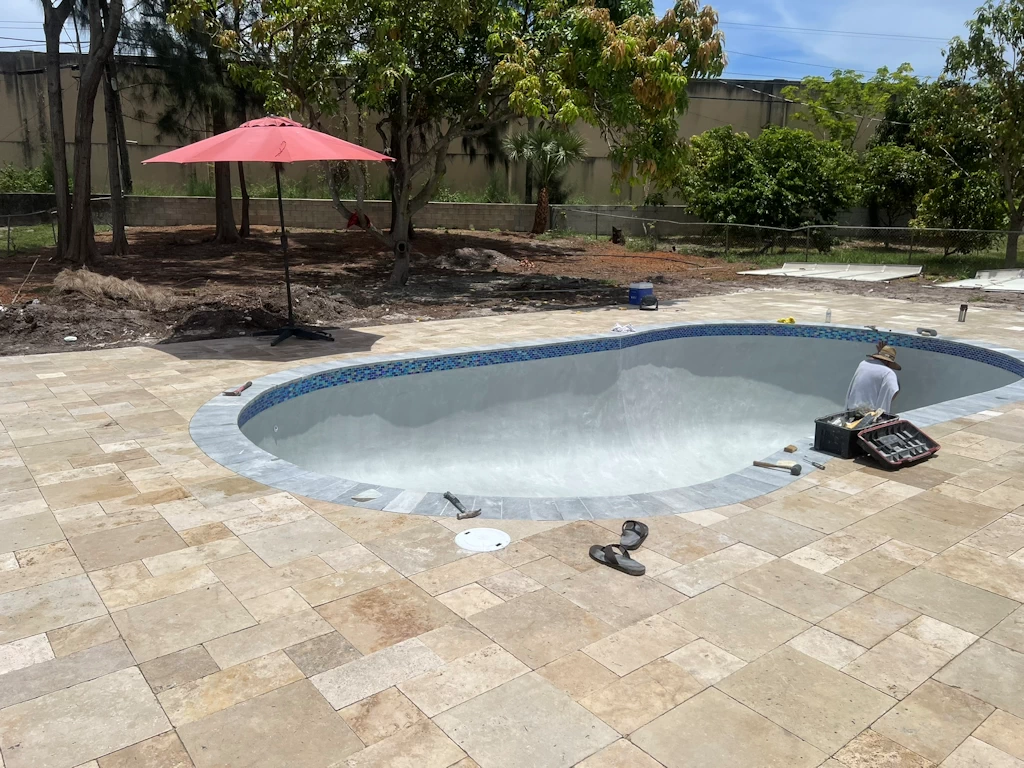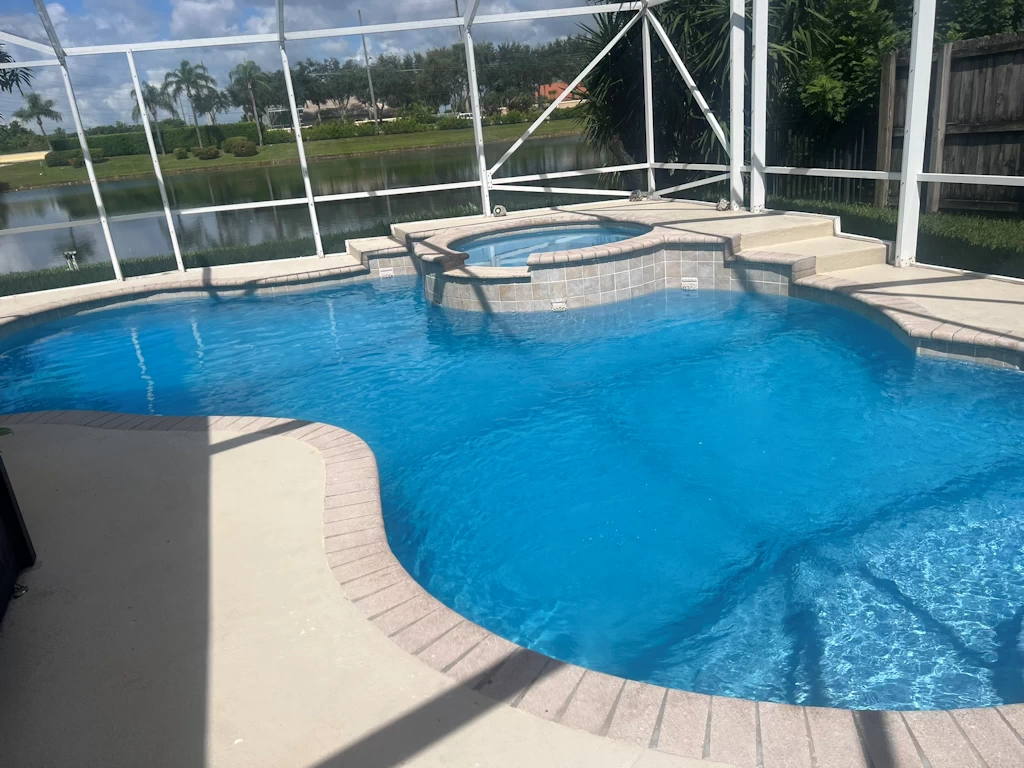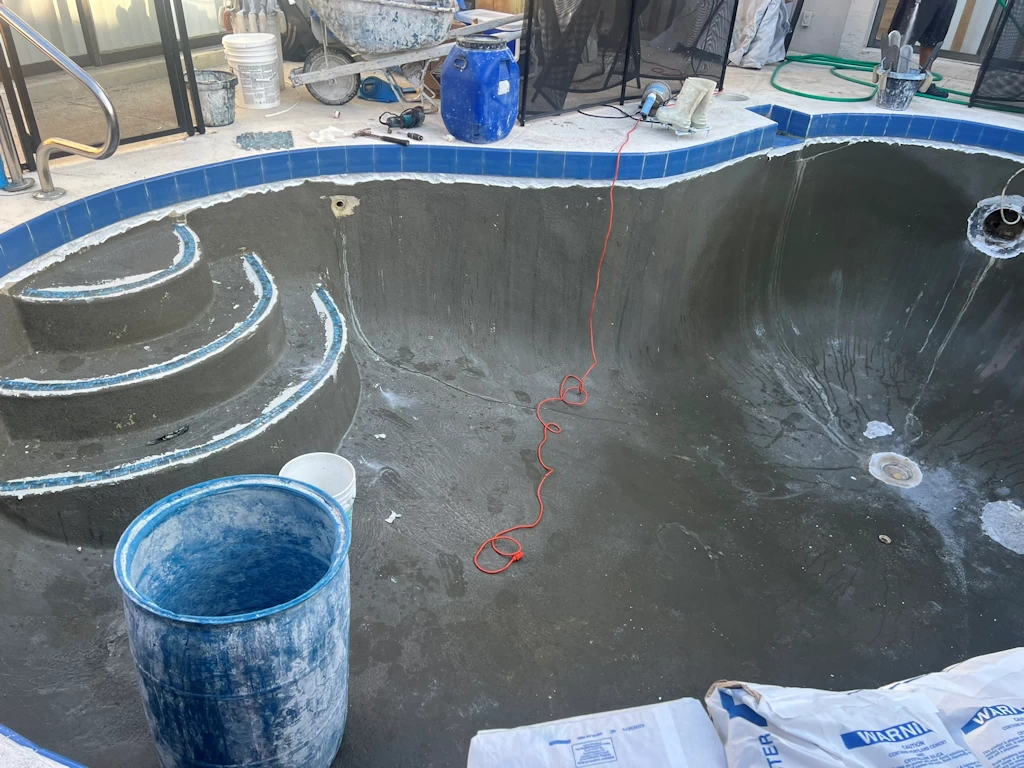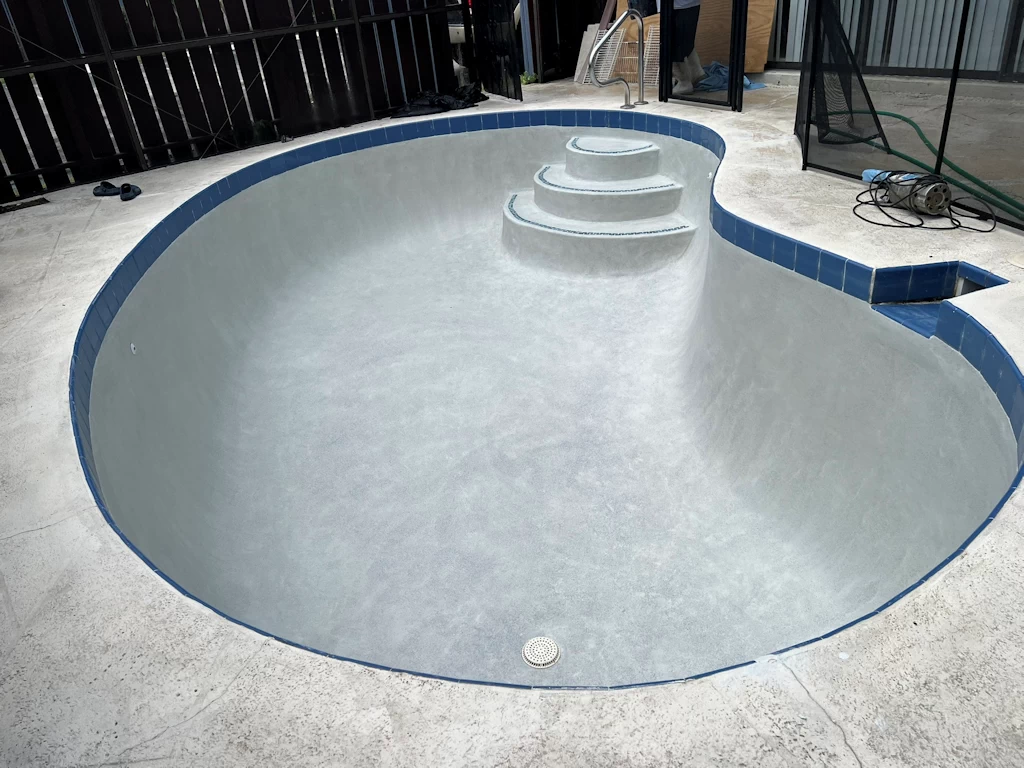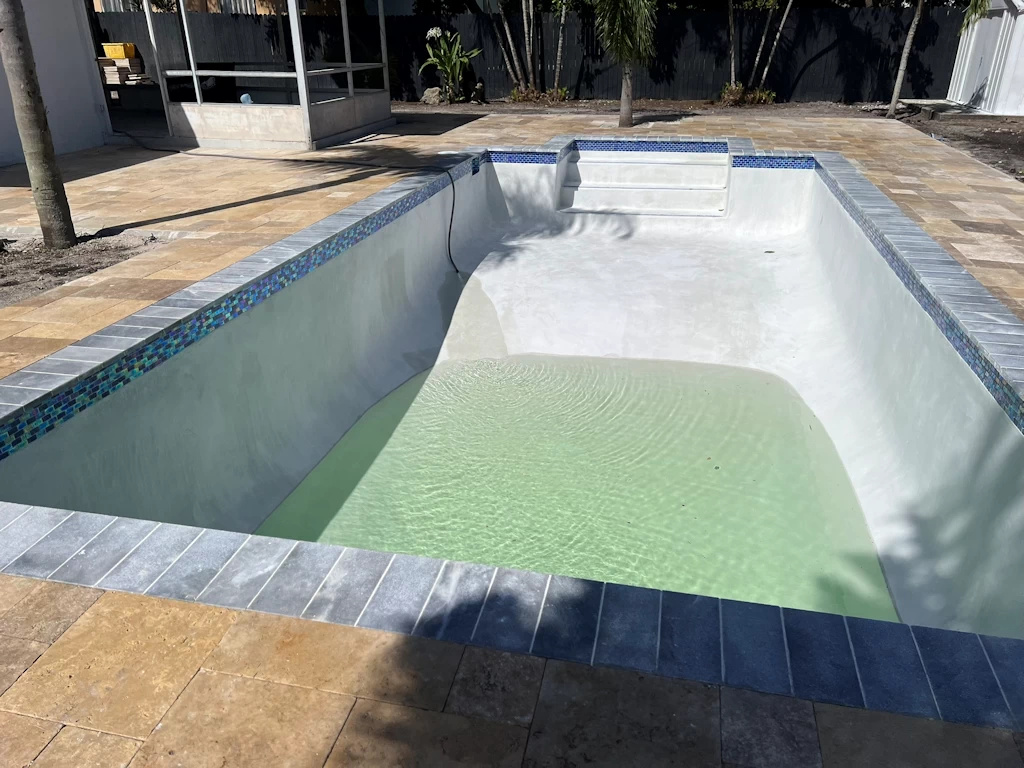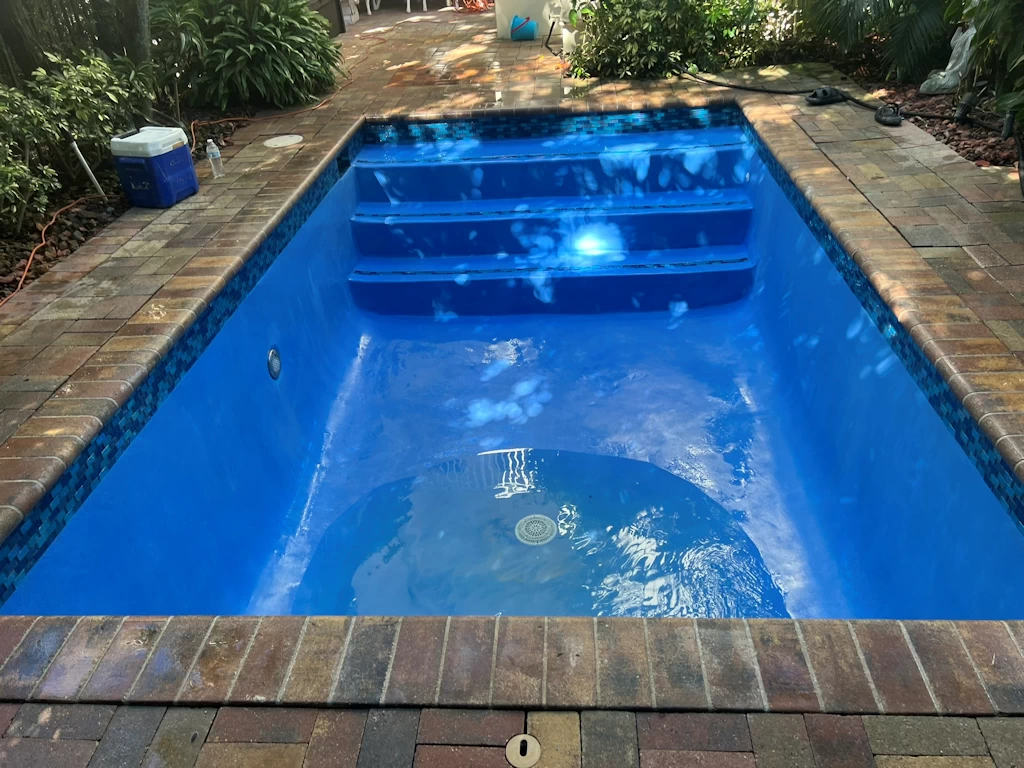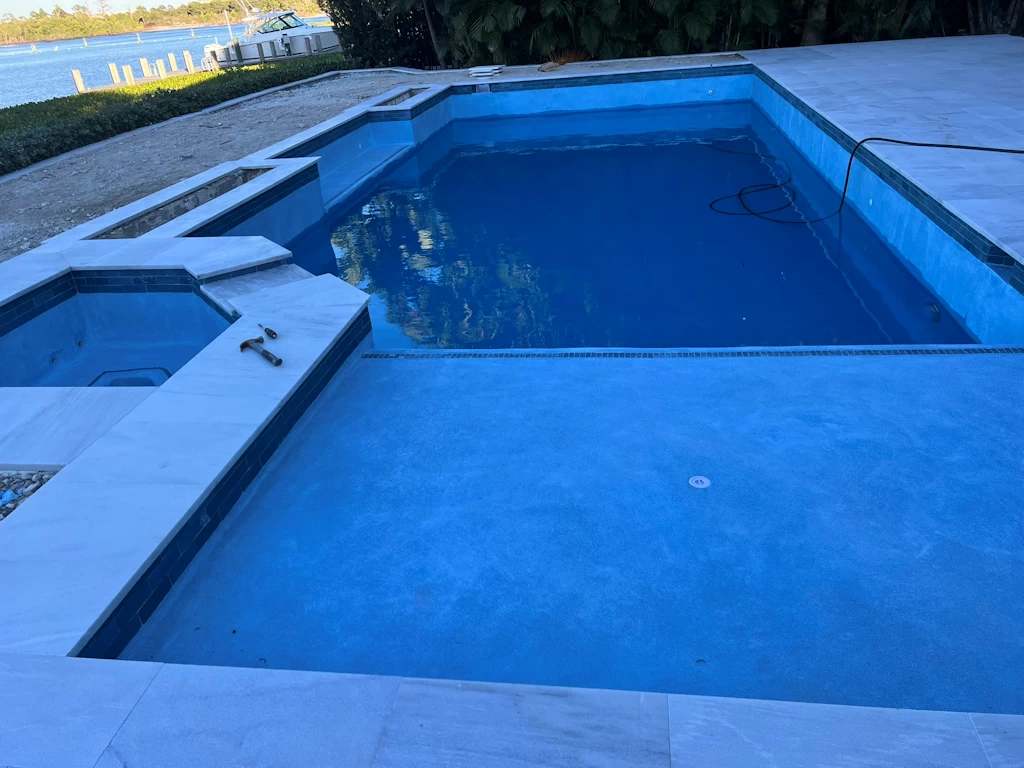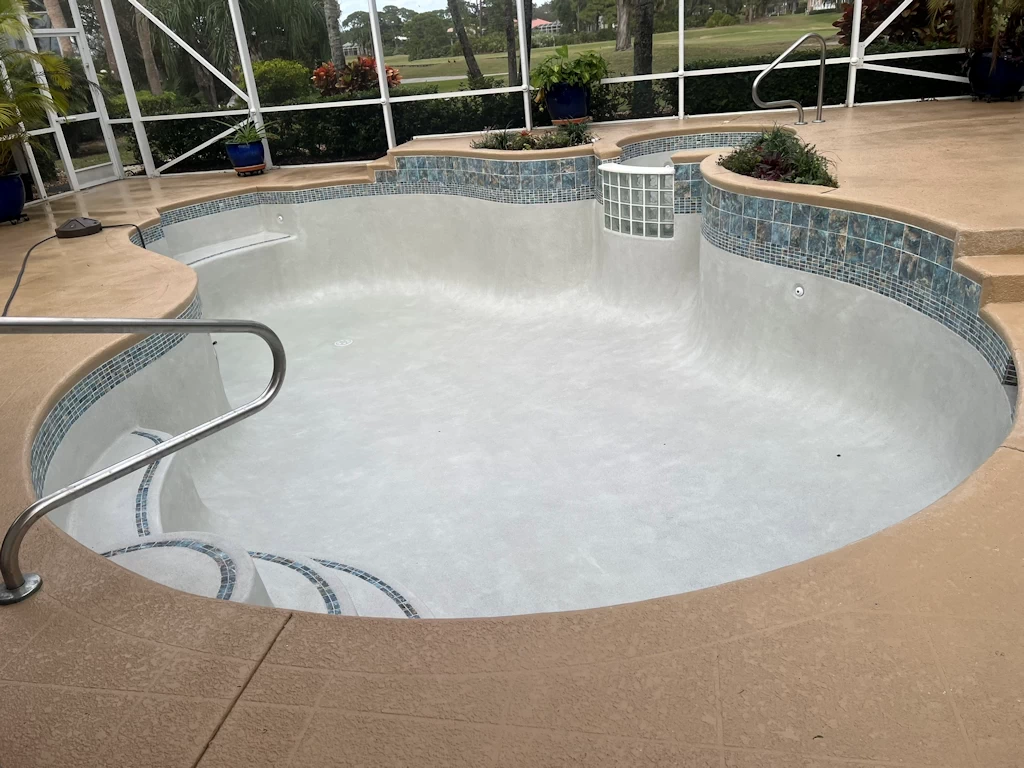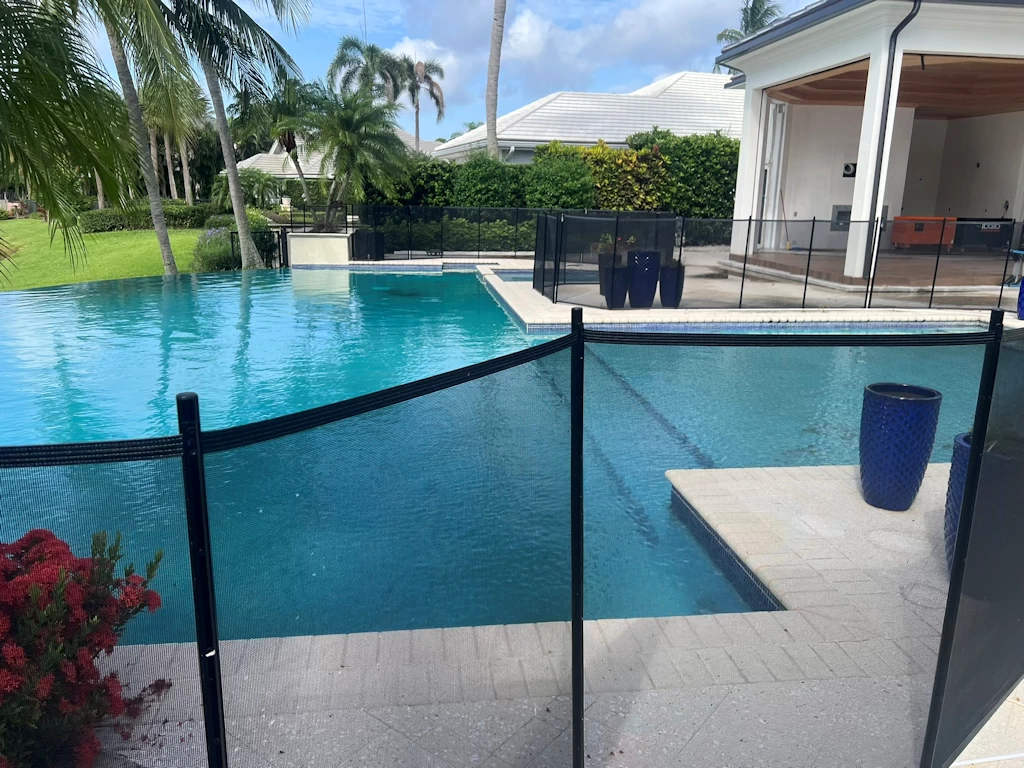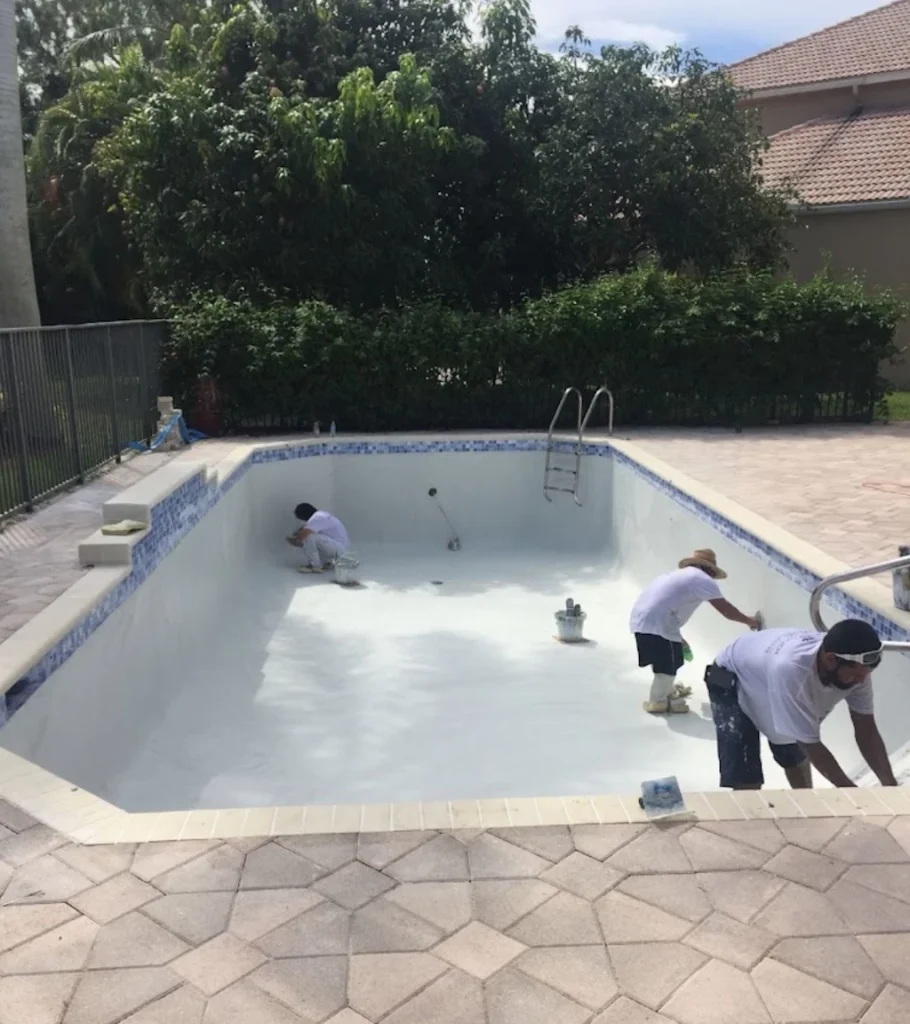Restore, Protect, and Beautify Your Pool
Over time, even the most well-maintained swimming pools begin to show signs of wear and tear. Cracks, stains, rough patches, or faded finishes can not only take away from the beauty of your pool but also impact its safety and comfort. That’s where pool resurfacing services come in—a cost-effective solution to bring your pool back to life, extend its lifespan, and enhance your backyard oasis.
What Is Pool Resurfacing?
Pool resurfacing is the process of applying a new surface finish to the interior of your pool. Whether your pool is made of concrete, gunite, fiberglass, or another material, resurfacing restores the smoothness, durability, and overall appearance of the pool. This service often involves repairing any cracks or damaged areas, prepping the surface, and then applying a fresh finish such as plaster, quartz, pebble, or tile.
Signs Your Pool Needs Resurfacing
If you’re unsure whether it’s time to resurface your pool, here are some common indicators:
-
Rough or peeling surfaces that can be uncomfortable on the feet.
-
Stains and discoloration that won’t come off with cleaning.
-
Cracks or chips in the pool surface that may lead to leaks.
-
Frequent repairs or patchwork that no longer hold up.
-
Water level issues, as damage in the surface can cause water loss.
If you’ve noticed any of these issues, resurfacing is the best long-term solution.
Benefits of Pool Resurfacing
-
Enhanced Appearance – A resurfaced pool looks brand new, with fresh colors and textures that improve your backyard’s curb appeal.
-
Increased Safety – Resurfacing eliminates rough or sharp surfaces that could injure swimmers.
-
Improved Comfort – New finishes like pebble or quartz provide a smoother, more luxurious feel underfoot.
-
Extended Lifespan – Protects your pool structure from further deterioration and costly repairs.
-
Customization Options – Choose from a variety of finishes, colors, and materials to match your style and home’s design.
Types of Pool Resurfacing Finishes
-
Plaster – A cost-effective option that provides a smooth and classic look.
-
Quartz – Durable and available in a range of colors, offering both strength and beauty.
-
Pebble – A premium option known for its long-lasting finish and natural, textured look.
-
Tile – Elegant and highly customizable, perfect for homeowners seeking a unique design.
How Often Should You Resurface Your Pool?
On average, pools need resurfacing every 7 to 15 years, depending on the material, water chemistry, and how well the pool is maintained. Regular cleaning and balanced water chemistry can help extend the life of the finish.
Why Professional Pool Resurfacing Matters
DIY pool resurfacing may seem tempting, but it requires specialized tools, expertise, and materials to ensure long-lasting results. Professional pool resurfacing guarantees a flawless finish, proper preparation, and added protection to your pool’s structure.
✅ Conclusion: Pool resurfacing is one of the most effective ways to restore your pool’s beauty, comfort, and safety. It not only gives your backyard a fresh, inviting look but also extends the life of your investment. Whether you want a sleek plaster finish, a durable quartz coat, or a luxurious pebble texture, resurfacing your pool is a smart way to keep your swimming space looking and feeling its best for years to come.
